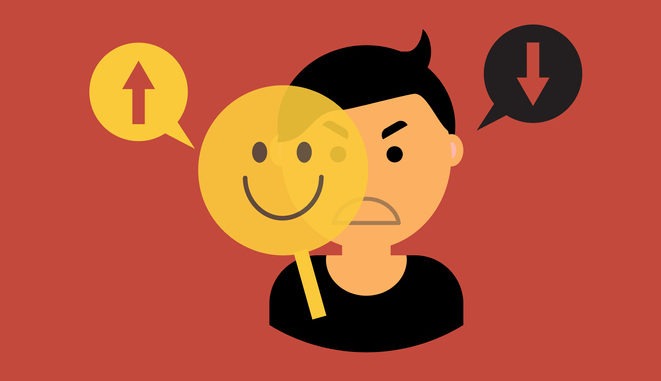
Struggling to know how to respond to an awkward person in your life? Unspoken tension and passive aggressive behaviour can wear you down, but it doesn’t have to be this way. Our experts have coping strategies and top tips to help you tackle the situation…
CREDIT: This is an edited version of an article that originally appeared on Happiful
The chances are we’ve all experienced passive aggressive behaviour in one form or another. Whether it’s a friend giving you the silent treatment, a work colleague ‘misunderstanding’ your instructions, your partner making subtle comments about the division of chores, or a sullen teenager slamming their bedroom door, a sense of indirect hostility can fester under the surface of many situations.
“To put it simply, passive aggressiveness is a way of behaving that is indirectly aggressive rather than directly aggressive towards others,” explains mindset coach Ruth Kudzi. “It can show up in a number of ways; someone may claim that they are fine, when it is clear this isn’t the case, they may refuse to respond to requests, share negative feelings through subtle actions, or make you feel guilty about a situation.” The problem is that this type of behaviour is often so subtle we tend to brush over it, or pretend it hasn’t happened – which doesn’t help in the long run.
“It’s the passive nature of the aggression that means it can be so covert it’s hard to identify as aggressive,” says love and relationships coach Emma Spiegler. “But passive aggression must not be underestimated; it has slow and detrimental effects, and it can ruin a relationship. And – this is the thing – when we’re on the receiving end of passive aggression, we can end up second-guessing our own behaviour. This can have a devastating effect on our confidence, self-esteem and our emotional health. It can also impact other areas of our lives, including our relationships, social life and work life,” she says.
Time to take action
Keen to stop these endless conflict circles, or understand how to react in different situations? Our experts share their tips…
Identify it. “The first step to dealing with these situations is to watch out for signs of passive aggressive behaviour so that you can be aware of when you’re experiencing it,” Ruth advises.
Emma agrees. “The key here is to not get sucked into the covertness of this behaviour,” she says. “You need to name it for what it is – aggression. This can be a hard step because, often, denial is easier than challenging something head on – and change can be uncomfortable.”
Consider what is driving the aggression; while there are not necessarily excuses for this behaviour, understanding its triggers can be useful. “Many people who display passive aggressive traits are uncomfortable having difficult conversations, or believe that sharing emotion is to be avoided,” explains Ruth. “Equally, some people are more likely to display this behaviour because they may view passive aggression as more socially-acceptable than direct anger.”
Talk about it. “Once you’ve identified that someone is displaying passive aggression, it’s time to address it in a non-confrontational way by recognising the behaviour and giving the person an option to talk about their emotions,” recommends Ruth. Employing different communication strategies can be useful, and it’s important to prepare for these conversations properly. How you broach the subject will depend on a lot of different factors – who the person is, your relationship, the type of behaviour you’ve been experiencing, and the length of time it’s been happening.
Take a step back. In some cases the best thing to do is remove yourself from the situation as much as possible. “If you can’t physically remove yourself, try to emotionally remove yourself so you don’t let the behaviour impact how you feel,” says Ruth. “The more that we allow the energy from the passive aggression to impact us, the more it can erode our wellbeing. Remember, this isn’t about you; it is down to the person being unable to communicate how they are feeling effectively.”
How to react
Emma shares her tips on how to cope with passive aggressive behaviour in different situations.
With work colleagues
It’s important to acknowledge that your feelings matter in the workplace, and your emotional wellbeing should be looked after here too. Many people fear they can’t say anything in case they lose their jobs, but this shouldn’t be the case. Address the situation directly with your colleague, or speak to someone higher up; the chances are that others feel the same way.
With friends
Passive aggression in close friendships can be tricky to address, as it’s easy to let certain behavioural traits become part of your relationship dynamic. Let your friend know that something has been playing on your mind, and arrange a time to speak. When you do so, share a few recent examples of the troubling behaviour, and express your feelings about it. It’s good to open up the dialogue – and be prepared to listen in case there are ways you might have been contributing to this dynamic.
With strangers
Crossing paths with a sulky shop assistant or a rude family at the park is not unusual, but it can still knock your confidence. As you’re not invested in this relationship, remember that you don’t need to engage with it. With strangers, you have no idea about their level of empathy or communication skills, so it’s best to just walk away.



Be the first to comment